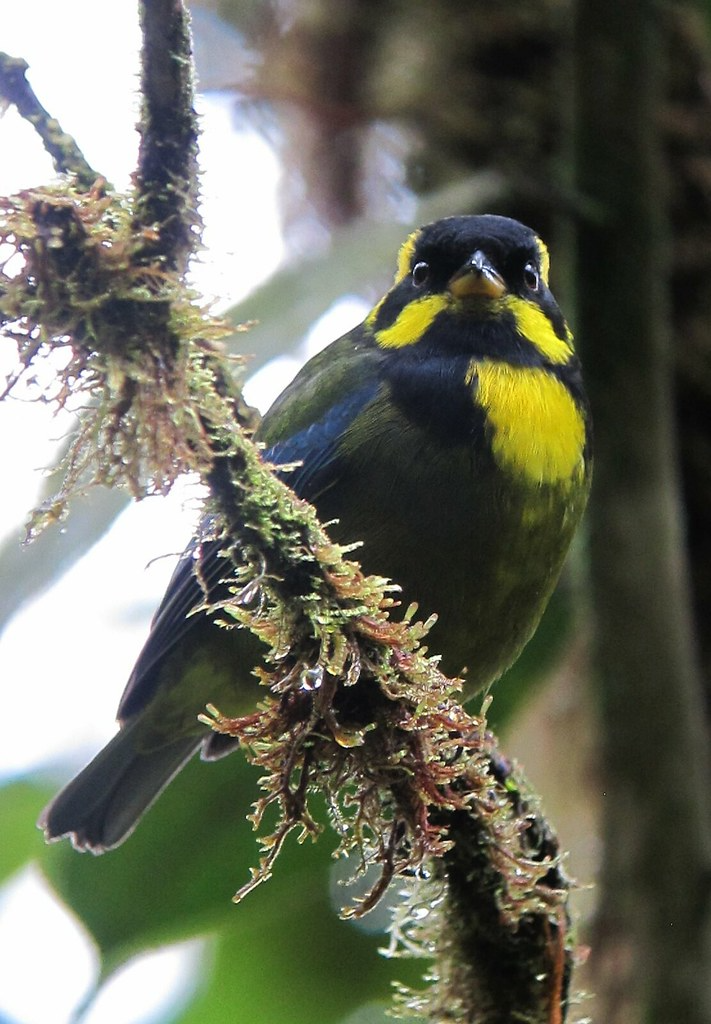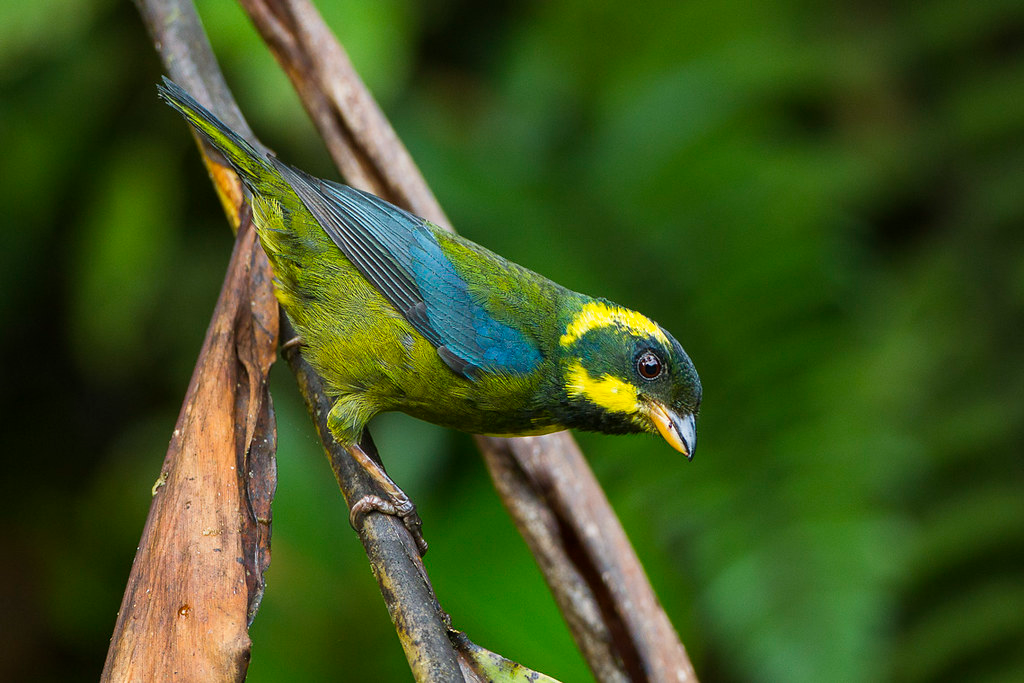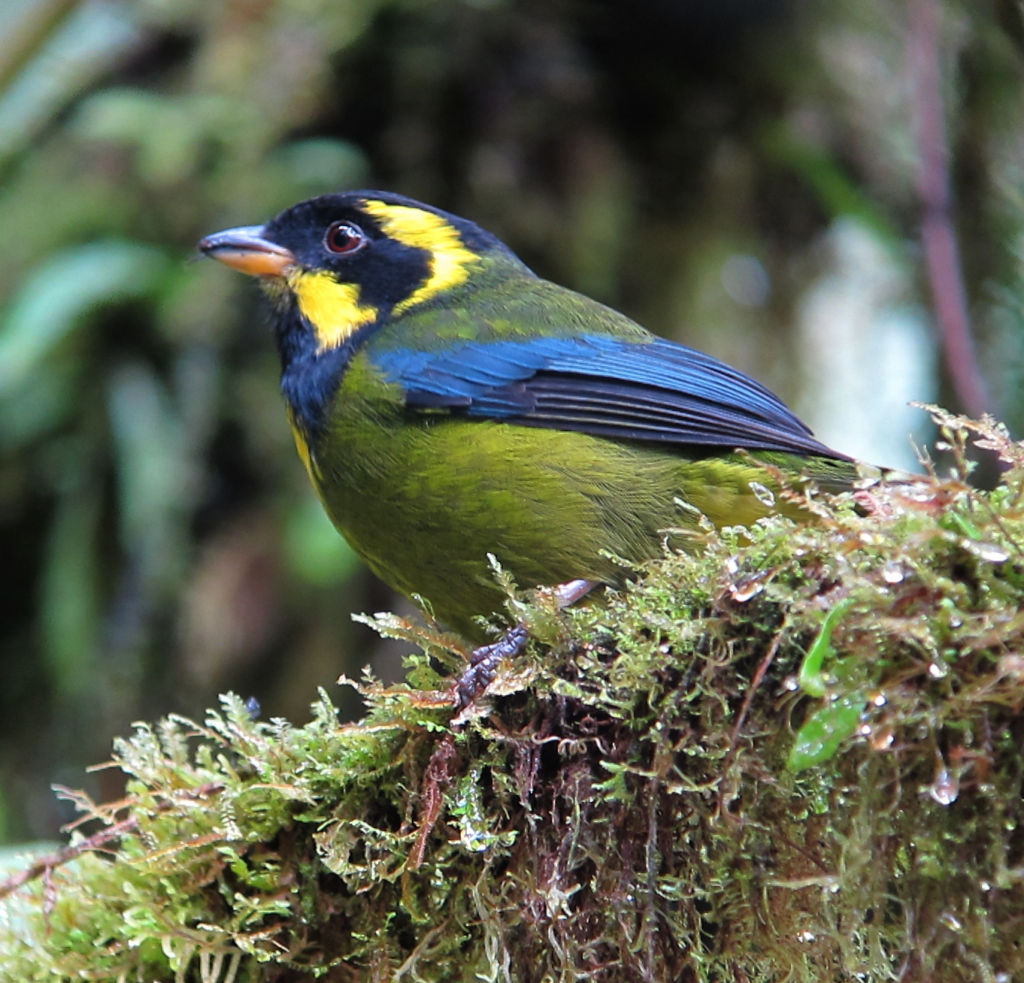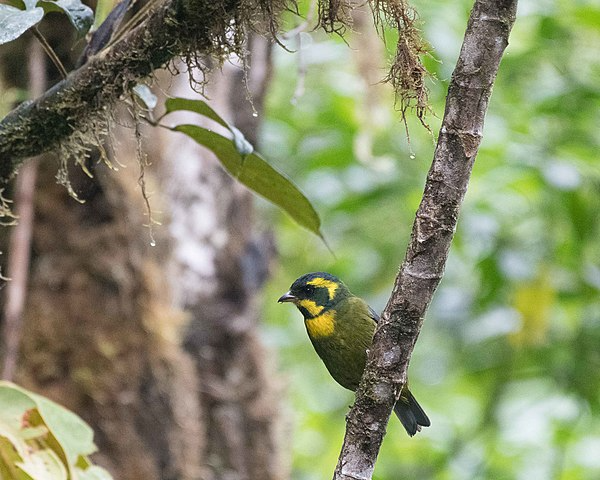Restricted to a small area in the mountains, the bird of this county is one of the most sought after and beautiful.
Meet the golden-ringed tanager

The golden-ringed tanager (Bangsia aureocincta) is a plump bird with a black head and lower throat extending to the sides of the black breast with a very visible yellow ring framing the cheeks and yellow ear coverts. olive. There is also a hint of yellow in the middle of the chest that tapers to the olive green below. The upperparts are green, with the rump and upper tail coverts paler, although a more iridescent green. The wings are dark black with the wing coverts and secondary feathers edged in blue. The eyes are dark red, the upper beak black, the lower jaw whitish and the legs gray.

Females look very similar to males, with the main difference being that the golden ring is narrower and more green and yellow in color. The yellow on the breast is duller like many of their other markings.
Only one juvenile bird has been described, which is generally duller compared to adults.

This bird is endemic to a small area of Colombia.
See this post on Instagram
A post shared by Hardcore Birding (@hardcore_birding)
They inhabit a small area of very humid cloud forest on the slopes of Chocó between 1350 and 2195 meters.

Little is known about the diet of the golden-ringed tanager, however it appears to eat fruits and insects.

Very little is known about the reproductive habits of this bird, although a dome-shaped nest has been observed about 2.3 meters above ground level made almost entirely of moss, with the interior lined with rootlets and fine fibers. . It appears that peak breeding may occur between May and June and chicks are seen in July.
See this post on Instagram
A post shared by Montezuma Rainforest (@montezumarainforest)
This bird is considered Vulnerable in the IUCN Red List and in the Colombian Red Book. Any species with such a limited range and specific habitat requirements deserves a lot of attention, but this tanager does not appear to be experiencing significant declines at this time.

You can see and hear this bird right here in the video below:





